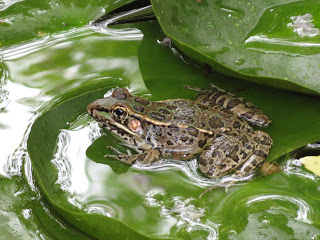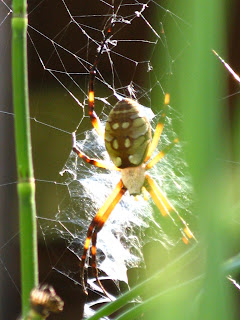
The world's a different place just before dawn as I walk the dogs. The birds are beginning their morning songs and sometimes I'll catch raccoons or opossums on their way back to their hiding places after their night out. In a neighborhood like mine, it sometimes seems as if the yards have been almost loved to death with fertilizers, sprays, enthusiastic pruning, and our need to conform to the suburban ideal - making these quiet morning moments with nature more precious.

Because of where I live, I see most "critters" as a sign of healing and gardening success - each bird, beneficial insect, butterfly, spider, earthworm, frog, or even snake that finds my yard hospitable. The red-tailed hawks and occasional heron are particular delights, even though they sometimes make a meal of fish from my pond. Don't get me wrong, I realize this view is the fruit of privilege. My family's next meal is not dependent on protecting the crop from rabbits or agricultural blight. But I feel pure joy at the sight of something wild in this tamed landscape.

So, although it seems like gardener heresy, one of my favorite things is seeing three small field rabbits each morning in my neighbor's yard. Their silhouettes in the dark look like chocolate Easter bunnies backlit by the streetlight - always dependably there, standing warily or nibbling at something that seems to grow only in that spot. They were there this morning as we walked by, and I expected them to be gone by the time we came back by. That's our daily routine. But, this morning one remained behind. His lifeless body crumpled by a car, the dogs and I were all startled to find him there in the street.
Why mention it? Because it seems appropriate to mark the passing of an individual. It's easy to see change when it happens on a grand scale or in large numbers. But it actually happens in small increments, like the loss of one small rabbit or the cultivation of a single garden that provides habitat and refuge for a bit of something wild. I'd love to hear how you're creating change in your patch of the planet. And click on the link to the left to read what Carol is doing for creative rabbit damage control at May Dreams Gardens!

Comments
Thank you.